


At what point do you label yourself a ‘car collector’? Is there a set figure of cars you need to reach in order to attain the collector nickname, or does multiple cars mean you’re a hoarder rather than a collector? The answer will mostly likely be different depending on who you ask, but car collectors often find themselves itching to experience all manner of vehicles, whether they're from the dawn of the automobile or the latest hypercars. Once you’ve established just how different the character of these cars is, it’s time to zone in on what really makes your blood pump. For secretive collector Monsieur T, a life-long passion for cars has led him to experience true motoring greats, and build an appreciation for the engineering and driving experience of multiple cars. Sadly, as new cars arrive, some need to find new homes, and this trio of racers are heading to Aguttes on Wheels’ upcoming Autoworld Auction & Motion sale on October 5th.
Rather than the typical stories of a child growing up around their father’s oil-covered tools and the pungent smell of leaded petrol, it was Mr T’s mother who was the car aficionado and would drive him to school in a Jaguar XK 150 Coupé during the early 1960s. Travelling in a car that engaging and enjoyable, even at such a tender age, is almost certainly going to leave a lasting effect. As expected, Mr T was hooked, and by the age of 13, he bought a rare 1939 GMF Cabriolet, which had only covered a few hundred kilometres, a car he incredibly still has in his collection today. By the time he turned 18, it was all about the sports cars, with multiple Fiat Oscas, a Facel Vega HK 500 and the incredible Iso Rivolta, before falling under the spell of the Prancing Horse, as well as discovering a love for historic motoring. It is those historic machines that we now focus on, in particular a wonderful trio of racers that were used to their absolute fullest in period, and lovingly cared for in the decades that followed.


1922 Bugatti Type 30 Grand Prix Usine
Mr T purchased his first Bugatti, this stunning Type 30 Grand Prix racer from 1922, back in 1981 and knew even back then he was in possession of a true piece of automotive history. The Type 30 is a particularly important model in the history of the marque, holding the title of the first 'production' 8-cylinder car after the construction of several prototypes, and would lay the most solid of foundations for the legendary Grand Prix Type 35.

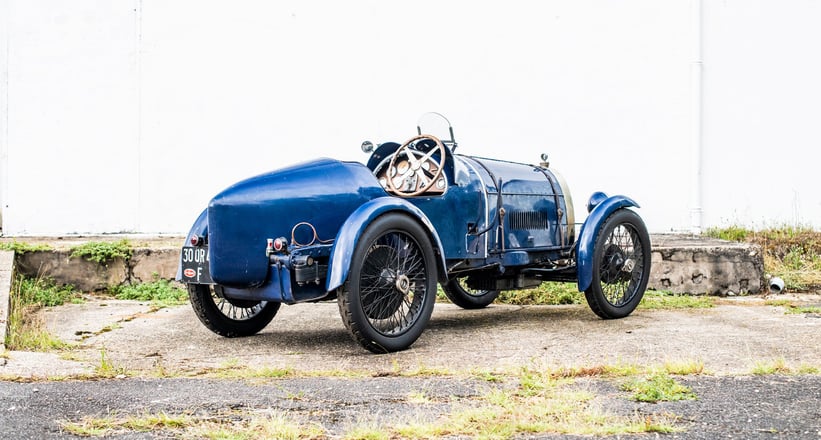

First shown at the summer edition of the 1922 ACF Grand Prix in Strasbourg, Ettore decided to submit four cars to face the competition, numbers 4001 to 4004, with this very example being number 4002. These four machines boasted a 15cm shorter chassis from the Type 22, which was enough to enhance the Bugatti’s already impressive agility even more. The Type 30 also was the debut of the company’s new 2-litre 8-cylinder engine, combined with their unusual, but now immediately distinctive cigar-shaped bodywork and streamlined radiator. The quartet met varying levels of success at their first-ever race in Strasbourg, with two Type 30s bringing home second and third place. From there, this example would continue to race in many European events as well as competing in the United States, cementing a legacy for the Type 35 and later Type 51s to follow. While it is reported around 500 road going Type 30s were created, competition cars were more scarce. Now, some 102 years later, factory led race cars such as this fine example are almost impossible to come across. While this wonderful piece of history's all-original chassis has plenty of stories to tell, it wasn’t the only Bugatti that found its way into Mr T's collection…
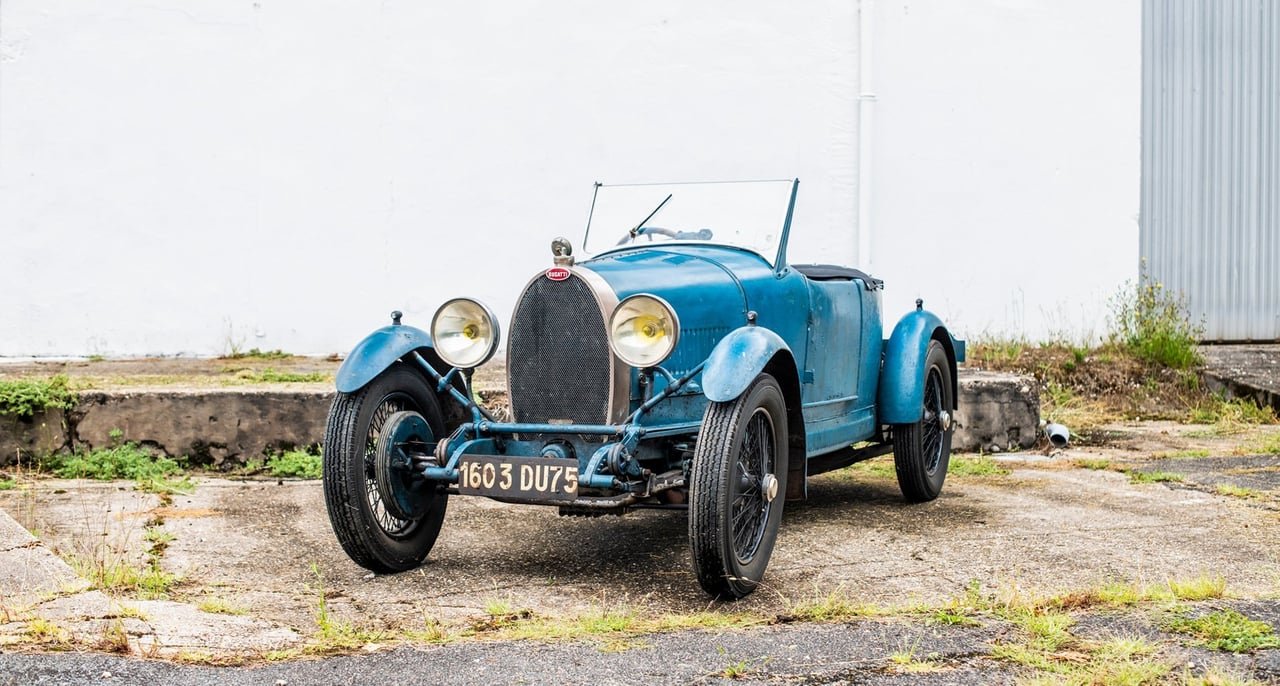


1929 Bugatti Type 40 A Grand Sport
Following the on-track success of the Grand Prix Type 35, Ettore Bugatti decided it was time to turn his thoroughbred racing car into a machine that could be driven on the open road. First came the aptly named Type 35 A, or 'Course Imitation Tecla', which featured an 8-cylinder engine with a 3-bearing crankshaft derived from the Type 30, and then the Type 37, with its 4-cylinder 1.5-litre engine. Following those models was the Type 40, which became a great success, particularly with its factory Grand Sport 3-seater body. Of course, being a Bugatti, the Type 40 was merely a link in the marque's chain of success, and soon came the Type 40A Grand Sport, such as this example that Mr T has lovingly owned for decades.
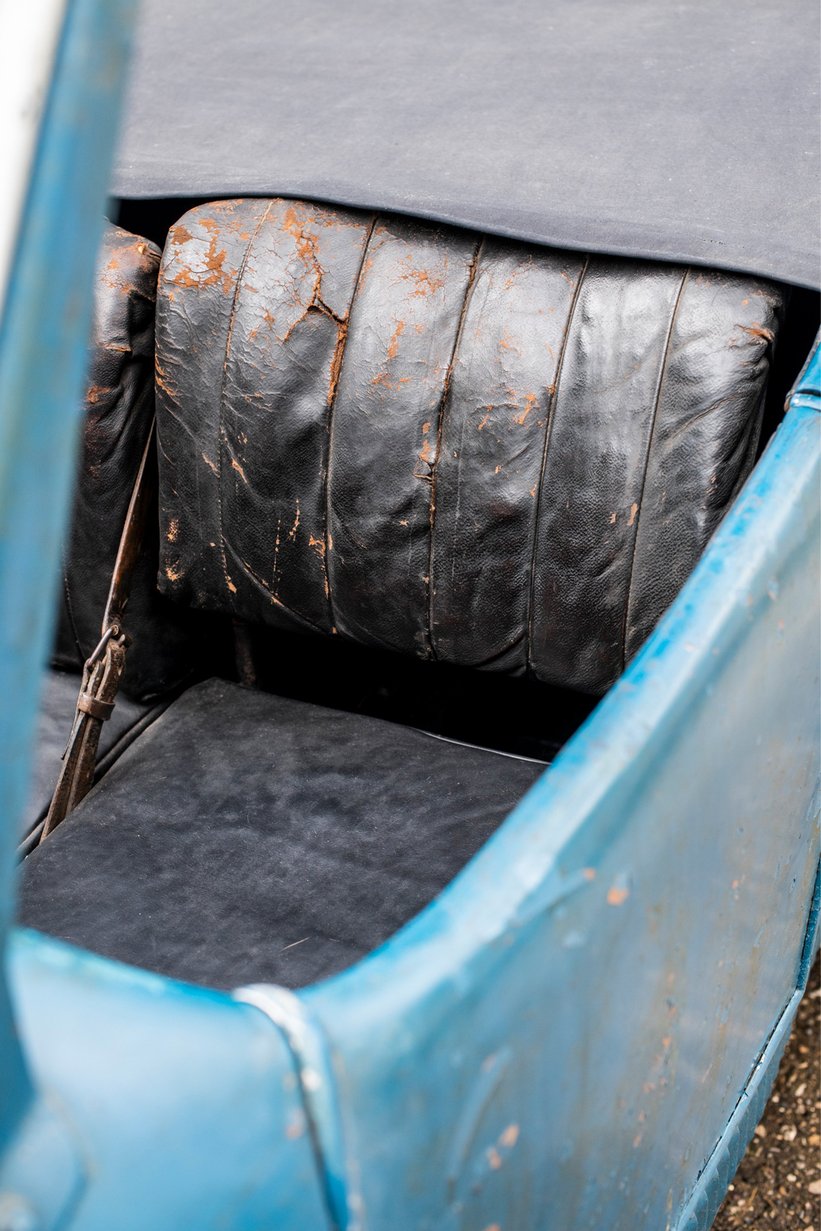
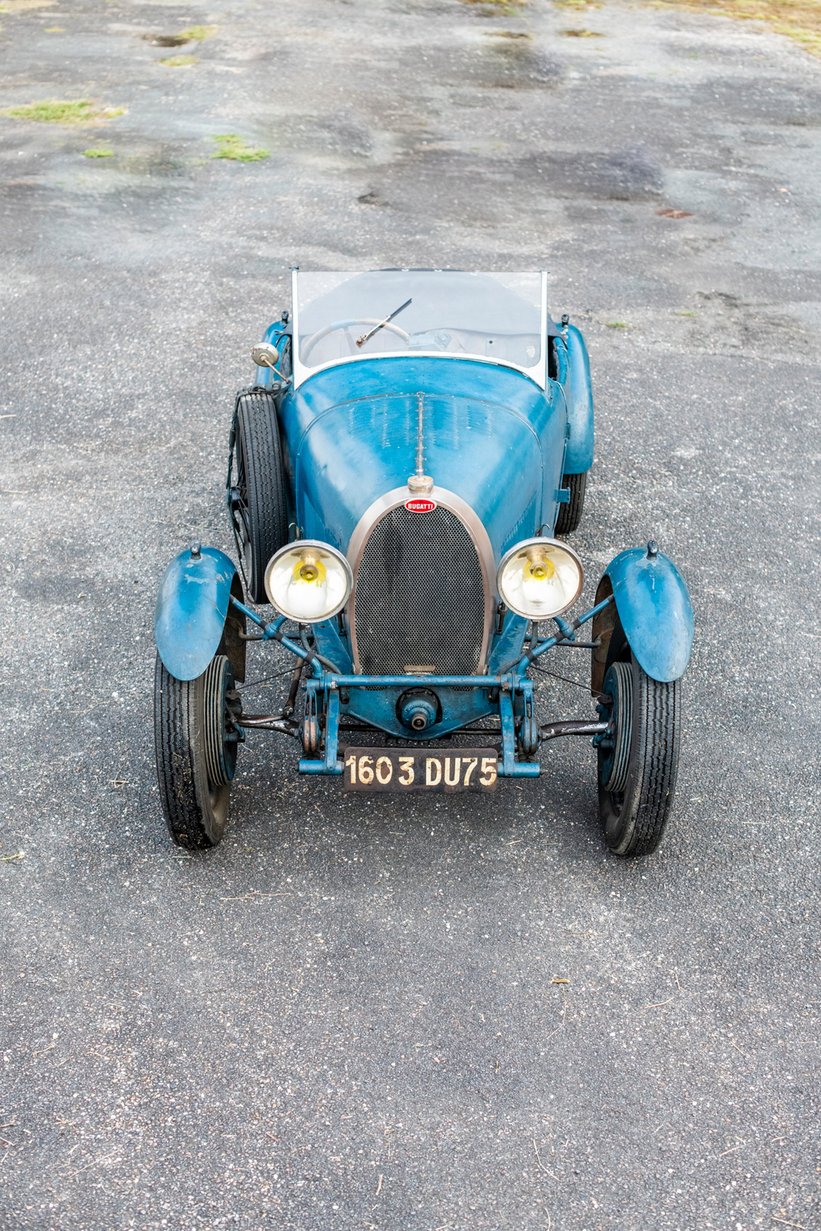
This A model borrowed a Type 49 engine block and now boasts a displacement of almost 1,650 cc, fuelled by an electric Autoflux pump and powered by dual ignition, marking a vast improvement over the previous machines. This example is recorded as being one of the earliest Type 40 A’s, and boasts the extremely rare Marchal et Vaucansson 'Double Ignition' switch for feeding one or two coils on the dashboard. When Aguttes were busy learning the history of this already special car, all of these small but hugely significant details suggest that this Grand Sport was a special order, and it is presented in exceptional original condition, with its paintwork, woodwork and leathers telling the story of almost 100 years of what was certainly a rich and fantastic history,
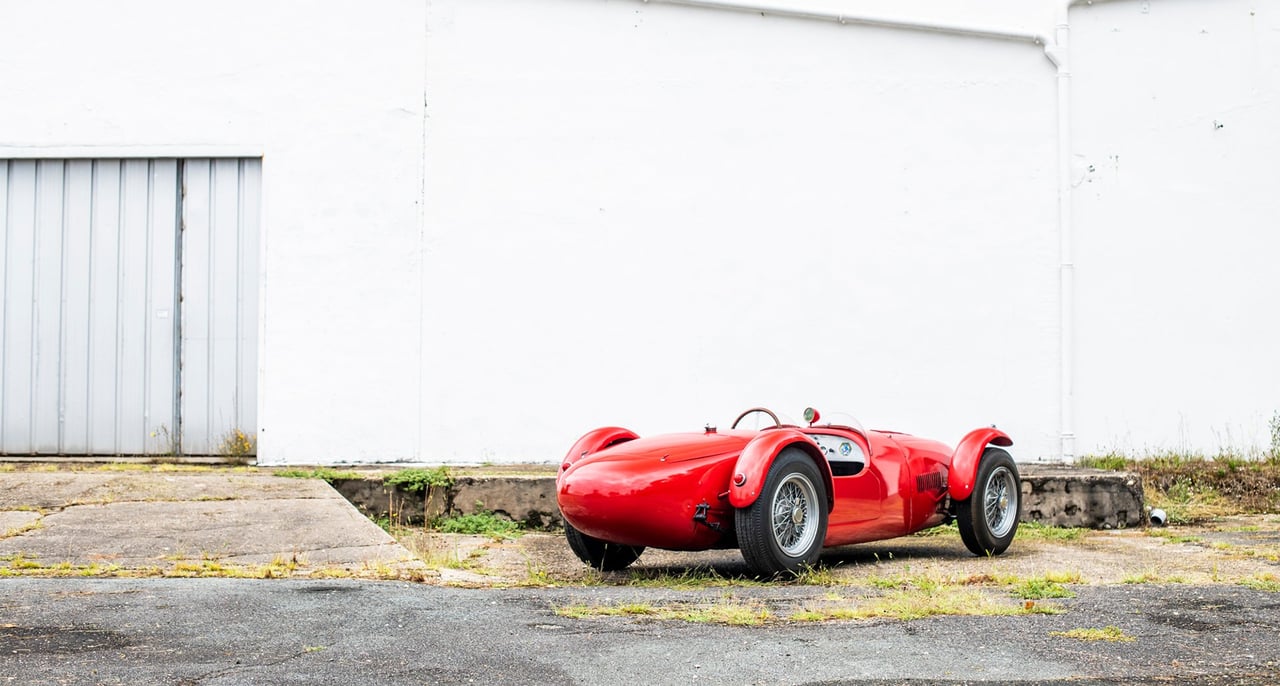
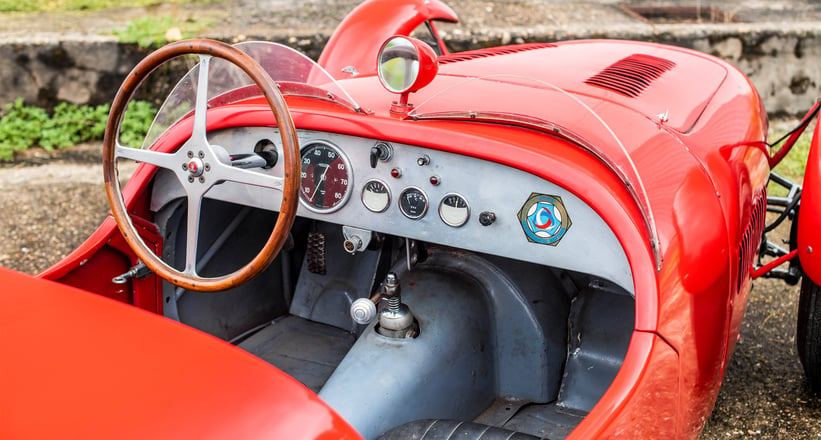

1948 Maserati A6GCS Monofaro Usine
The finale in this unique trio is a flash of vibrant Rosso in the sea of French Blues, a glorious Maserati A6 GCS 2000 Monofaro from 1948. This Maserati is true survivor, being one of just 14 examples ever built, and one of just four works machines. Highly regarded as one of the most versatile racing cars ever, the Monofaro boasts a mightily powerful and yet incredibly lightweight 2-litre, six-cylinder engine that complimented its featherweight chassis perfectly. For the bodywork, the talented Medardo Fantuzzi was chosen, who penned a superb two-seater siluro body, designed to be practical yet elegant while allowing for separate wings so that it could compete in endurance racing with the wings, and in Grand Prix racing without. This incredibly simple design feature made the car hugely versatile, allowing it to compete in various events all over Europe.
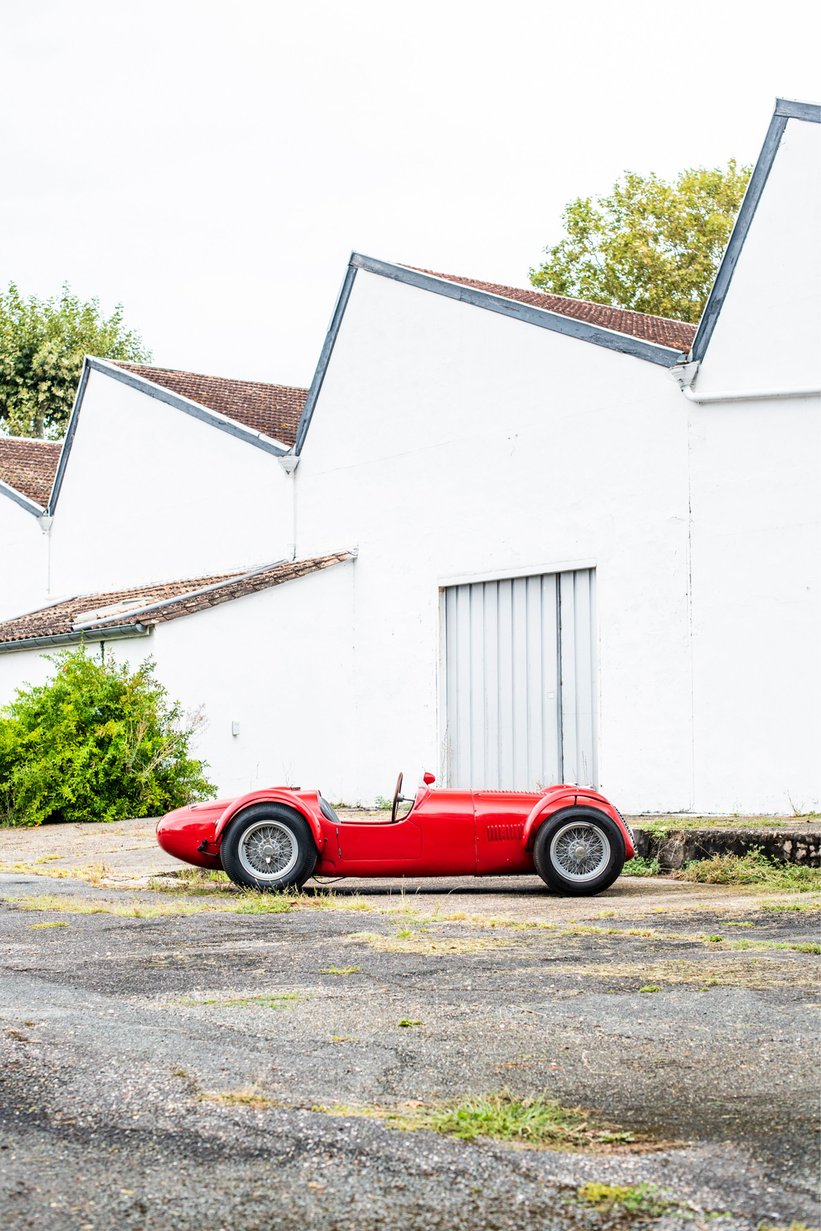

Out of the mere 14 examples of the Monofaro that were produced, only eight survived, making it one of the most sought-after Maseratis ever in today’s market. Its rarity, incredible racing pedigree, plus the fact it was the last car developed by the Maserati brothers before the Orsi family took control, makes it a real hero in the Italian motor racing scene and an essential milestone in the genesis of 6-cylinder racing cars. If all of that wasn’t enough, this very car was driven by Formula One royalty Juan-Manuel Fangio and Benedicto Campos.

Sure, the name Fangio wasn’t well known by anyone as he lined up on the starting grid of the 1949 Rome Grand Prix, but he would soon become synonymous with glory and defiance. The car was raced extensively throughout the decades and remains the most decorated Monofaro in existence. Now well into its 70s, this 2000 A6 GCS is eligible to take part in the greatest historic events, including the Mille Miglia, Goodwood and Monaco, where it can compete in both single-seater and sports categories, just as it did back in the day!
Photos by Remi Dargegen























































